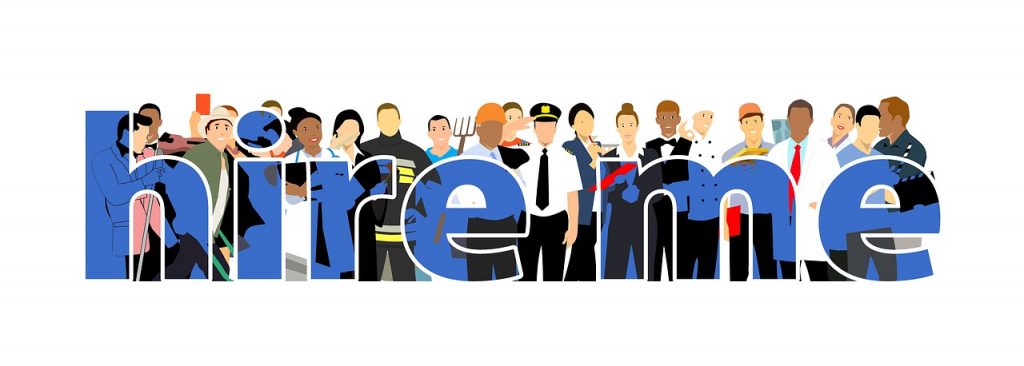Chapter 3: You and Your Audience
17 Perception
Perception is the process of selecting, organizing, and interpreting information. This process, which is represented in Figure 3.2 below, includes the perception of select stimuli that pass through your perceptual filters, are organized into your existing structures and patterns, and are then interpreted based on previous experiences. How you perceive the people and objects around you affects your communication. You respond differently to an object or person that you perceive favorably than you do to someone (or something) you find unfavorable. But how do you filter through the mass amounts of incoming information, organize it, and make meaning from what makes it through your perceptual filters and into your social realities?
 Figure 3.2. Selection, interpretation, and organization that contribute to perception.
Figure 3.2. Selection, interpretation, and organization that contribute to perception.
Selecting Information
Most people take in information through their five senses, but your perceptual field (the world around you) includes so many stimuli that it is impossible for your brain to process and make sense of it all. So, as information comes in through your senses, various factors influence what actually continues on through the perception process (Fiske & Taylor, 1991). Selecting is the first part of the perception process, in which you focus your attention on certain incoming sensory information. Think about how, out of many other possible stimuli to pay attention to, you may hear a familiar voice in the hallway, see a pair of shoes you want to buy from across the mall, or smell something cooking for dinner when you get home from work. You quickly cut through and push to the background all kinds of sights, smells, sounds, and other stimuli, but how do you decide what to select and what to leave out?
Watch the following 2 minute video: The Monkey Business Illusion
You tend to pay attention to information that is salient. Salience is the degree to which something attracts your attention in a particular context. The thing attracting your attention can be abstract, like a concept, or concrete, like an object. Did you notice the person in the monkey suit while watching the video above? It was subtle. A bright flashlight shining in your face while camping at night is sure to be salient. The degree of salience depends on three features: (Fiske & Taylor, 1991) whether the object is visually or aurally stimulating, whether it meets your needs or interests, and whether it meets or challenges your expectations. Consider the image below: The Crashed Nike Ball Guerilla Marketing Example.

Source: 18 of the Most Memorable Guerilla Marketing Campaigns
Related to salience, this example may be considered visually stimulating (it’s quite large), it may be considered interesting, and it challenges most people’s expectations in terms of size. The artwork is meant to stimulate one’s imagination to question” why is the ball so large? What kind of large person (or monster perhaps) might have kicked it so hard it became embedded in the side of a building? This example represents an impossible scenario created through art that generates salience.
Visual and Aural Stimulation – It is probably not surprising to learn that visually and/or aurally stimulating things become salient in our perceptual field and get our attention.
Needs and Interests – We tend to pay attention to information that we perceive to meet our needs or interests in some way. We also find salient information that interests us.
Expectations – The relationship between salience and expectations is a little more complex. Basically, we can find expected things salient and find things that are unexpected salient.
As a communicator, you can use this knowledge about salience to your benefit by minimizing distractions when you have something important to say. It’s probably better to have a serious conversation with a significant other in a quiet place rather than a crowded food court. Aside from minimizing distractions and delivering your messages enthusiastically, the content of your communication also affects salience. Whether a sign helps you find the nearest gas station, the sound of a ringtone helps us find your missing cell phone, or a speaker tells you how avoiding processed foods will improve your health, you select and attend to information that meets your needs.
 Likely you have experienced the sensation of being engrossed in a television show, video game, or random project that you paid attention to at the expense of something that actually met your needs – like cleaning or spending time with a significant other. Paying attention to things that interest you but don’t meet specific needs seems like the basic formula for procrastination that you might be familiar with.
Likely you have experienced the sensation of being engrossed in a television show, video game, or random project that you paid attention to at the expense of something that actually met your needs – like cleaning or spending time with a significant other. Paying attention to things that interest you but don’t meet specific needs seems like the basic formula for procrastination that you might be familiar with.
If you are expecting a package to be delivered, you might pick up on the slightest noise of a truck engine or someone’s footsteps approaching your front door. Since you expect something to happen, you may be extra tuned in to clues that it is coming. In terms of the unexpected, if you have a shy and soft-spoken friend who you overhear raising the volume and pitch of his voice while talking to another friend, you may pick up on that and assume that something out of the ordinary is going on. For something unexpected to become salient, it has to reach a certain threshold of difference. If you walked into your regular class and there were one or two more students there than normal, you may not even notice. If you walked into your class and there was someone dressed up as a wizard, you would probably notice. So, if you expect to experience something out of the routine, like a package delivery, you will find stimuli related to that expectation salient. If you experience something that you weren’t expecting and that is significantly different from your routine experiences, then you will likely find it salient. You can also apply this concept to your communication. Good instructors encourage their students to include supporting material in their speeches that defies audience expectations. You can help keep your audience engaged by employing good research skills to find such information.
Organizing Information
Organizing is the second part of the perception process, in which you sort and categorize information that you perceive based on innate and learned cognitive patterns. Three ways you sort things into patterns are by using proximity, similarity, and difference (Coren & Girgus, 1980).
Proximity – In terms of proximity, we tend to think that things that are close together go together.
Similarity – We also group things together based on similarity. We tend to think similar-looking or similar-acting things belong together.
Difference – We also organize information that we take in based on difference. In this case, we assume that the item that looks or acts different from the rest doesn’t belong with the group.
Since you often organize perceptual information based on proximity, you may automatically perceive that two people are together, just because they are standing close together in line.
This type of strategy for organizing information is so common that it is built into how you function in your daily life. If you think of the literal act of organizing something, like your desk at home or work, you follow these same strategies. If you have a bunch of papers and mail on the top of your desk, you will likely sort papers into separate piles for separate classes or put bills in a separate place than personal mail. You may have one drawer for pens, pencils, and other supplies and another drawer for files. In this case you are grouping items based on similarities and differences. You may also group things based on proximity, for example, by putting financial items like your checkbook, a calculator, and your pay stubs in one area so you can update your budget easily. In summary, you simplify information and look for patterns to help conduct tasks and communicate efficiently in all aspects of your life.

Simplification and categorizing based on patterns isn’t necessarily a bad thing. In fact, without this capability you would likely not have the ability to speak, read, or engage in other complex cognitive/behavioral functions. There are differences among people, and looking for patterns helps you in many practical ways. However, the judgments you might place on various patterns and categories are not natural; they are learned and culturally and contextually relative. Your perceptual patterns do become unproductive and even unethical when the judgments you associate with certain patterns are based on stereotypical or prejudicial thinking.
Interpreting Information
Although selecting and organizing incoming stimuli happens very quickly, and sometimes without much conscious thought, interpretation can be a much more deliberate and conscious step in the perception process. Interpretation is the third part of the perception process, in which you assign meaning to your experiences using mental structures known as schemata. Schemata are like databases of stored, related information that you use to interpret new experiences. Schemata are like lenses that help you make sense of the perceptual cues around you based on previous knowledge and experience.
It’s important to be aware of schemata because your interpretations affect your behavior. For example, if you are doing a group project for class and you perceive a group member to be shy based on your schema of how shy people communicate, you may avoid giving him or her presentation responsibilities because you do not think shy people make good public speakers. Schemata also guide your interactions, providing a script for your behaviors. Many people know how to act and communicate in a waiting room, in a classroom, on a first date, and on a game show. Even a person who has never been on a game show can develop a schema for how to act in that environment by watching The Price Is Right, for example. A final example, you often include what you do for a living in your self-introduction, which then provides a schema through which others interpret your communication.
A final example, you often include what you do for a living in your self-introduction, which then provides a schema through which others interpret your communication.

